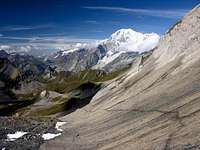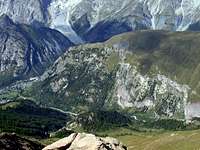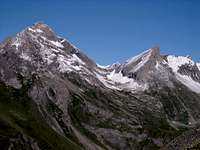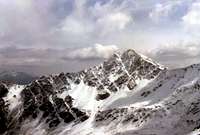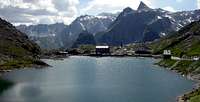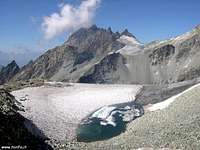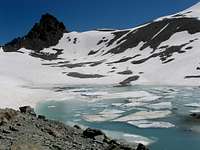-
 8022 Hits
8022 Hits
-
 82.48% Score
82.48% Score
-
 15 Votes
15 Votes
|
|
Area/Range |
|---|---|
|
|
45.73550°N / 7.31314°E |
|
|
Mountaineering |
|
|
Summer |
|
|
Note
La montagna chiama i suoi figli, ed essi rispondono fedelmente al suo appello… Osvaldo Cardellina, Diario alpinistico, 1964-65 Page texts: @ OsvaldoCardellina "Osva", passed away on May 2, 2022. Page owners: Christian Cardellina e Osvaldo Cardellina. Any updates from September 12, 2022: Antonio Giani, page administrator, friend and climbing companion. Testi della pagina: @ OsvaldoCardellina "Osva", scomparso il 2 maggio 2022. Proprietari pagina: Christian Cardellina e Osvaldo Cardellina. Eventuali aggiornamenti dal 12 settembre 2022: Antonio Giani, amministratore della pagina, amico e compagno di salite. |
NORTHERN Overview (Mount Blanc/Valpelline)




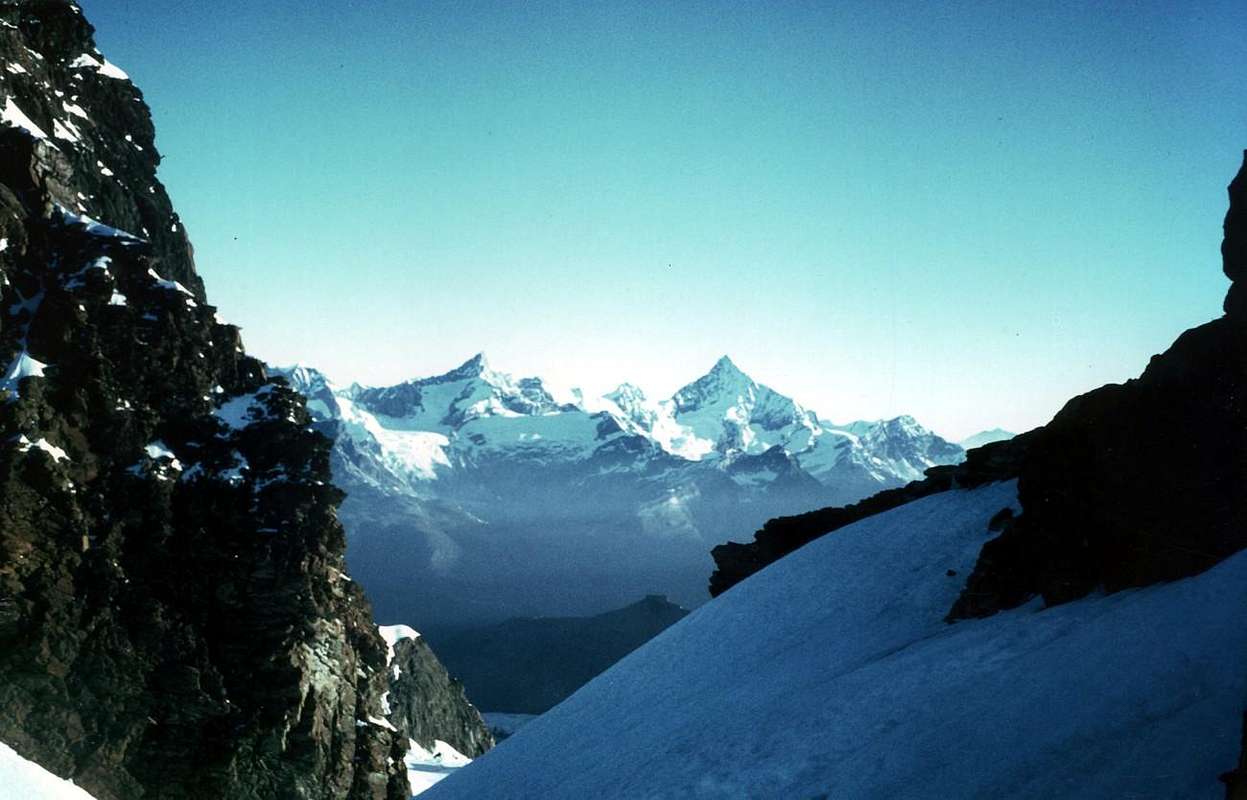

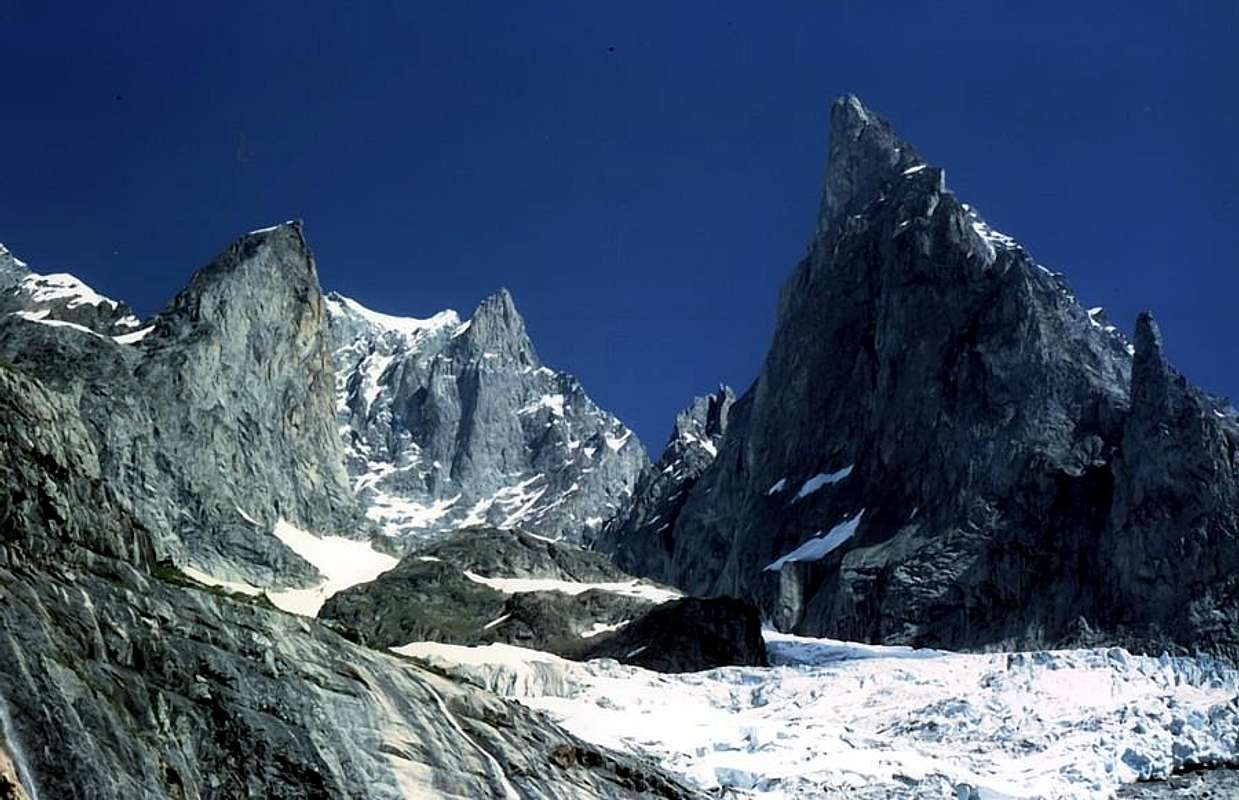
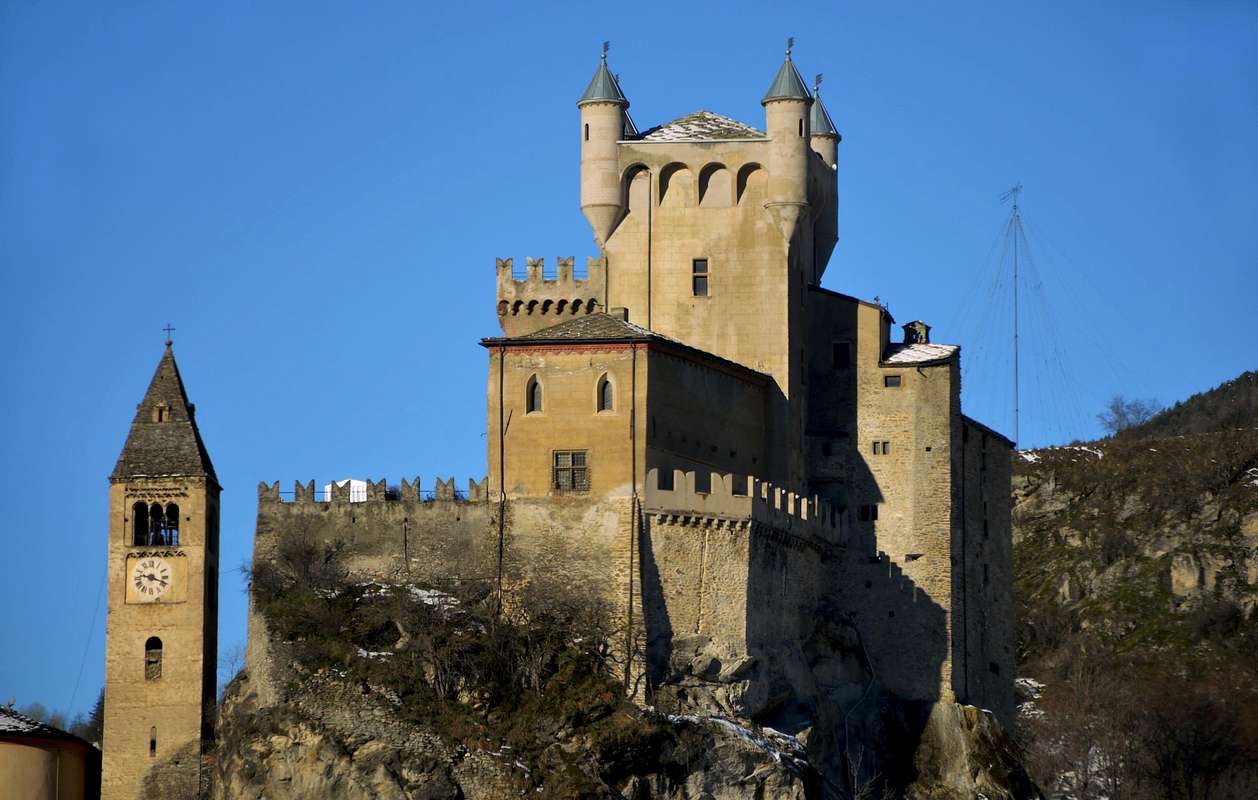
From Seigne Hill towards Mount Blanc & Ferret Passes

Northwesterner small VALLEYS (Ferret/Valpelline)
"Liconi, Chambave, Planavalle-Rochère & Clusella Vallons", by livioz, Antonio, Rustichelli & emilius
VALLEYS & small Valleys In order to deploy clockwise from Courmayeur-Val Sapin to East above Dora Baltea Central Valley
In Courmayeur, Pré saint Didier, Morgex, La Salle, Avise, Saint Nicolas, Arvier, Saint Pierre, Sarre Municipalities & Aosta Town Central Valley & surroundings from North to South Val Sapin: from Courmayeur to Villair Dessus Fraction (signal no transit); through the path n° 42 to Refuge Bertone, at the beginning of Mount de la Saxe. In descent, to Northwest, with path n° 3/TMB/Haute Route number 1 in Northwest to Ferret Valley, lower part nearby Planpincieux.
Liconi small Valley: from La Salle Municipality to Planavalle (1.760m; signal no transit) with Regional Road; from this to Southwest and path n° 20/21 to Piginière Alp. After with Northwest to entrance of Chambave Comba, near Chambave Alp (1.880m); crossing to Weast reach Licony Alp (1.878m; Madonna de Lourdes). Along Licony Torrent, with path n° 4, to Lake (2.555m) and Hill (2.674m). In descent, with path n° 44, to Val Sapin.
Chambave-Battaglione Aosta Pass small Valley: from Chambave Alp, with path n° 20 between two torrents, to Grand Plan Alp (2.187m) and through walloon floor to Btg. Aosta Pass; descent in Northwest with traces-path n° 29 towards Armina(z) Vallon to Ferret Middle Valley.
Planavalle-Grande Rochère Vallon: from Planavalle to Eculé Pasture (1.886m) and fork 2.083 meters with unnumbered path along Planaval Torrent; from this in Northwest, without path on moraine, to Grand-Eau Torrent and in West to Grande Rochère (3.326m), West Slopes with traces.
Bonalex-Artanavaz small Valley: from Planavalle in North-northeast to Maison Blanche Pasture (1.871m), Rantin Alpages (2.333m), with path n° 6/7; after with path n° 7 to Bonalex Pasture (2.340m) and with unnumbered path and traces in moraine to Lake (2.782m). In North, through snowfields, Aiguille of Artanavaz (3.071m; ski-mountaineering); in Northeast Grand Creton (3.071m), by easy rocks on South Face or on Northwest Crest. From Bonalé, in West, Pass (2.925m), through traces on moraine, and Aiguille (3.201m) by South-southeast Crest with easy rock (a passage of II°-).
Serena Southern small Valley: from fork before Rantin Alp, path n° 6, below Serena Loch, in Northeast to Serena Hill (2.546m; ski-mountaineering).
Ors-Pisserio small Valley: from fork before Rantin Alp in South with path n° 3A to Tramail des Ors (2.390m), crossing Pisserio Torrent, Felita or Fetita Hill (2.557m). Descent in East to Jovençan in Vertosan Vallon or traverse with path n° 3/2 on South Crest to Borromein/Bard Hills (2.176m).
Court de Bard Basin: La Salle to Challancin Village (1.610m; signal no transit near a mini parking) through Regional Road. In Northeast with path n° 2/2A to Ponteilles Alp and alternative 1.741 meters; from this point in Southeast with path n° 2 to Arpilles Pastures (1.802m; fountain) and in East to Court de Bard Hill. From this:
1) - in South to Mount Court de Bard (2.262m; beautiful by snowshoes);
2) - in North to Felita two Summits (2.623m).
Vertosan small Valley: from SS.26, near Saint Pierre Commune, to Vetan Hamlet with Regional Road; before go left to Vens (1.734m) through a deviation to Vertosan Walloon up to the Joux Saddle (1.934m; signal no transit); continue on dirt farm road with a brief descent into walloon reaching Zette Montagna (1.877m), Or de Breuil (1.850m) and Jovençan (1.867m) Alps. After with various paths to:
1) - in Northwest Felita Hill;
2) - in North-northwest Ziule Lake (2.524m), path n° 11.
3) - In North Citrin Hill (2.605m), path n° 10;
4) - in Northeast Vertosan Pass (2.689m), path n° 20.
Vetan-Leissé Comba: with previous route to Vetan small Resort (1.671m; various signals no transit); from this in Northwest through farm dirt road to Thoules (1.919m), Grand Arpilles (2.120m) Pastures and in North-northeast to ancient Le Crotte Alp (2.392m) in Verrogne Vallon. Also from Grand Arpilles in West to Chaz Creuse Alp (2.330m), below Aouillette (2.618m)/Leissé (2.771m) Comba (various Hiking Tour; ski-mountaineering).
Verrogne-Mounts Rosso-Vertosan-Fallère small Valleys: from Aosta Town or from Sarre Commune, through, in asphalt, "Salassians Road" to Ville sur Sarre (1.212m), Bellun (1.382m), Homenè (1.448m), Verrogne (1.582m) Hamlets; from this last, with path, in North to Montagna Vergioan (2.106m) and Le Crotte Alp. From this point, with various paths, excursions to Leyssé, Paletta (2.810m), Rosso (2.943m), Vertosan (2.822m) Fallère (3.061m) Mounts and Passes of Paletta (2.707m), Southern Vertosan (2.770m), Finestra (2.729m) and Lake Morto (Dead; 2.638m) and Rane (Frogs; (2.367m).
Clusella-Fallère small Valley: from Ville sur Sarre through Municipal Road in asphalt to Touraz (1.652m; signal no transit; in foreground the remains of enourmous landslide from Becca France of July 06th, 1564, with 600 deads, all the inhabitants of ancient Thora). Through farm dirt road to Morgnoz (2.052m), Frumière (2.062m), Chaz de Morgnoz (2.271m) Pastures. Easy excursions to Becca France (2.312m), Lake Fallère (2.415m) and Mount (3.061m; equipped route), Hill 2.674 meters, Mount d'Arsy (2.827m), Croix de Chaligne (2.608m), Met(z) Hill (2.485m) and Point (2.553m), paths.
Clou-Met(z)-Chaligne small Valleys: from Touraz (no transit signal) in East through dirt road to Metz Bionaz (1.731m), Vignon (1.789m), Condemine de Metz (1.874m) Pastures and Metz Alp (2.261m), nearby Labe Torrent. From Alpage with path to Met Hill, between Croix de Chaligne and Met Point.
Arpilles small Valley: from Aosta North Town with Main Route of Great Saint Bernard Valley to alternative nearby Grand Signayes Hamlet (737m); through the deviation, in asphalt, to Arpuilles (1.010m), Excenex (1.046m) Fractions. From these by farm dirt roads or various paths, numbered or not, to Tsa de Metz or "Les Arpes Vieilles" (1.419m), below Checotteyes (1.715m) Alp. From this point to Met Hill and Croix de Chaligne.
"Vertosan, Flassin, Fallère-Clusella, Serena small Valleys & Merdeux Comba", by livioz, "Crevassino", Antonio & marco87
VALLEYS & VALLONS In order to deploy clockwise from Aosta Town in Central Baltea Valley to Great Saint Bernard Valley & By Basin
In Aosta, Gignod, Etroubles, Saint Rhémy en Bosses, Allein, Doues, Ollomont Municipalities to Valpelline Artanavaz/Buthier Streams Valleys & surroundings Gignod-Les Arpilles small Valley: from Aosta North with Main Route of Great Saint Bernard to alternative near Gignod-Lexert Commune/Fraction (1.044m); through the deviation, in asphalt, to Tercinod Dessous (1.108m), Rebiache (1.319m) Fractions. From this by farm dirt road to Arpeilles (1.419m); with unnumbered path to junction Southeast and Northeast Crests, two subsequent small saddles and Chalignes Summit.
Buthier small Valley: from Aosta with preceding road after alternative Lexert Fraction to following fork to Condémine (1.132m); through the deviation, in asphalt, to Grand Buthier (1.431m), Petit Buthier (1.441m), to fork Meriau/Mendey (1.598m; small parking). Reached the last (1.598m), continue on farm road to Roncaille (1.656m), Rombason (1.695m), Arolla (1.788m) Pastures, Refuge Chalignes near the Alp (1.936m) and La Tsa (2.225m). From this:
1) - in South to East Crest of Chaligne, with path;
2) - in West Passo Tardiva (2.410m), with path and in descent to Arsy Comba.
Arsy or Ars small Valley: from Mendey continue on dirt road in West to Meriau (1.603m), Praz Gallet (1.626m), Arsy (1.981m) Pastures; with the same, concomitant with paths n°3C/4, to Chaz d'Arsy Alp (2.263m), nearby three small Ars Ponds. From this:
1) - in Northwest with path to Ars Pass (2.534m), unnumbered path;
2) - in South to Mount Fallère, East Shoulder (3.043m) Northern Slopes, easy but steep with rotten rocks and debris. Flassin small Valley: with St. Bernard Road to Etroubles (1.270m), Saint Oyen (1.373m) Municipalities; leaving right the same go on dirt road/path n°7 to Champex (1.411m), Flassin de Meitin (1.654m), Flassin (1.700m) Pastures to Tsa de Flassin (2.258m) Alp. From this:
1) - in Southeast Fenetre Pass (2.729m), without path;
2) - in South Vertosan Pass (2.689m), unnumbered path and traces in terminal part.
3) - In South-southwest Flassin Pass (2.605m), path n° 7;
4) - in Northwest Testa Cordella(z) (2.663m), with path n° 7B. Easy traverse on ridge to Mount Flassin (2.772m).
Citrin Comba: from Saint Oyen to Saint Leonard Fraction (1.519m), leaving the Main Road to Great Saint Bernard. From this in Southwest Comba/Pont Hamlets, fork 1.464 meters; taking in South the path n° 8 to "Fonte Ferruginosa", Citrin de Meitin (2.005m) Pasture, Citrin Damon (2.312m) Alp to Citrin Hill (2.484m). In descent with path n° 10 to Vertosan Vallon, Vetan Comba and Dora Baltea Stream Central Valley.
Serena Northern small Valley: from Grande Rocher Fraction (1.544m), nearby Saint Leonard, continue with Municipal Road in West to Couchepache, Sainte Anne, Mottes (1.660m) to Maytie (1.676m; no transit signal). With path n° 9, crossing in South Bosses Torrent, to Farettes (1.666m), Arp du Bois Desot (1.936m); along the walloon in Southwest to Serena Hill (2.547m). Descent with path n° 6 to Planavalle Vallon, above La Salle.
Créton du Midi-Tete des Faces Vallon: Arp du Bois Desot (1.936m) Pastures in Southwest to Damon (2.109m); amongst two torrents, without path but debris and moraines, to Saddle 2.557 meters, between Grand Créton/Tete des Faces. In descent, same terrain, to following and in parallel Entremont Vallon: from Mottes to parking under Saint Bernard Motorway, nearby Devies Pasture (1.723m; no transit signal) with path-Haute Route number 1 to Merdeux-Desot (1.919m), Cotes (1.930m), Moindaz (1.973m) Pastures.
1) - Going along small torrent reach a source at the beginning, under the Entremont Point (2.650m); also from fork pastures returning, with unnumbered path, in South to Potz-Ardusi Pasture (1.784m) and through grassy-debris slopes to Entremont Vallon, below Tete des Faces (2.583m). In descent same route or connection between the two.
Merdeux Comba: from Mottes to parking under Saint Bernard Motorway, nearby Devies Pasture (1.723m; no transit signal) with path-Haute Route number 1 to Merdeux-Desot (1.919m), Cotes (1.930m), and in North to fork about 1.950 meters near Moindaz (1.973m) Pastures. After, more in Northwest, to Tsa de Merdeux (2.285m) and in West Malatrà Hill (2.928m). In descent with path n° 28/Haute Route number 1 to Malatrà Vallon.
Saulié or Ceingles Vallon: from Tsa du Merdeux in North with unnumbered path, traces and path n° 12, in final part, to Ceingles Pass (2.817m), between Little Golliaz and Aiguille of Saulié. Descent with the last path to Thoules Comba, below East-southeast Face of Great Golliaz (3.237m).
Tula-Golliaz Comba: from Moindaz or Muenda Pastures:
1) - in North along the Thoules Torrent to cross with dirt road from Tsa de Merdeux or from Merdeux Desot at the beginning of path n° 12 to Saint Rhémy Pass (2.540m);
2) - through valley floor, along the torrent, to ponds 2.622 meters and;
3) - with terminal part of path n° 12 to Saulié Pass, or
4) - in Northwest through steep moraines to Angroniettes Pass (2.936m).
Arc-Saint Rhémy Pass Basin: from Praz de Farcoz Pasture (2.223m; small parking), nearby the SS.27 of Great Saint Bernard,
1) - in Southwest with path n° 12 to Saint Rhémy Pass;
2) - in Northwest to Fourchon Pass (2.696m), through debris, moraines and easy small rocks.
Fenêtre Vallon: from alternative 2.356 meters (small parking), nearby Montagna Baou (2.373m) and just before Great Saint Bernard Hill, in West with unnumbered path and traces;
1) - Mount Fourchon (2.902m; ski-mountaineering); in Northwest with path n° 13A
2) - Fenetre Hill (2.698m).
Great Saint Bernard Valley: from Aosta North by S.S. Great Saint Bernard n° 27 (National Road), leaving Northeast the Regional Road to Valpelline, to Gignod, Etroubles, Saint Oyen, Saint Rhémy en Bosses Municipalities and Great Saint Bernard Hill (2.469m) to Switzerland.
Sports Routes: from Aosta Town or from Gignod Commune
1) - "Road of the Vineyards on Via Francigena" to Etroubles Commune, excursion for Hikers and Walkers;
2) - from Aosta Town "Napoleonic Route" to Great Saint Bernard Hill with descent to Switzerland, for Hikers.
3) - "Snowshoes Route" from Winter No Transit, immediately after Saint Rhémy Municipality (about 1.560 meters; parking), to Great Saint Bernard Hill, for Mountaineers with snow rackets.
Barasson small Valley:
1) - from Etroubles to alternative 1.348 meters and in Northeast to Palais Dessous, Veyaz and Prailles Dessous ("Agriturisme La Granze in Tsi Inconnu"), asphalt road; or
2) - from Saint Oyen (1.373m) in East to Farm, same road. From the fork before Prailles in Westr-northwest to Eternon (1.645m) Village, through Municipal Road. From this dirt road to fork 1.715 meters (signal no transit) and in West to Essanaz or Lessanaz Pasture (1.820m); crossing Ravine Wood and Barasson Torrent to Barasson Alpages (1.868m). After along torrent and path n° 16/17 to Crétoux Alp (2.074m); from this in North and path n° 16 to
3) - Barasson Oriental Pass (2.681m).
4) - In East, path n° 17, to Mount Paglietta (2.320m).
Menouve or Menovy small Valley: from Prailles Dessous-Quaye (signal no) to Menouve Pastures (1.913m), with dirt road; with path n° 21 to Trecaoudette Pasture (2.133m), in North to Tsa de Menovy (2.243m) in West Tsa Nouva. Continue, path n° 21, to Southern Menovy Pass (2.758m).
Molline Vallon: from Menovy with unnumberd path to L'Arvus Alp (1983m). Leaving left Menouve Vallon to Molline Vieille Alp (2.295m; ruines), Molline Bivouac (2.415m) near Alp, with path n° 21 in Northwest
1) - Molline Pass (2.915m), with unnumbered path-traces; in North
2) - Hannibal Pass (2.992m), between Mount Velan (3.734m), West Crest, and Testa Grisa (3.060m), through traces, debris, blocks and easy broken rocks.
Allein-Saron small Valley: from SS.27, after Gignod and before the torrent in altitude 1.083 meters, deviation to Allein Commune (1.253m); from this with dirt road to hanté and Daillon (1.417m; signals no transit). Continue to Crou, Maurier, Comba, Pied du Plan (1.722m), Baravex Desot, du Meitin and Damon (1.925m), Parc (2.014m) Pastures. Through Fontaines Wood with path n° 24 to Fontanin Alp (2.227m) and Mount Saron (2.681m).
Doues-Champillon small Valley: from Regional Road to Valpelline, nearby Rhins Chateau (785m), or directly from Valpelline, to Doues Commune (1.251m); with dirt road to Chatellair, Court, Haut Praz Bas, Pointier, Creux, Baita Novella, Plan Debat (2.076m; signal no transit; source), From this, passing Notre Dame de la Neige Chapel, Champillon Pasture (2.050m; great parking; fountain) in Northwest with path n° 32/TdC (Tour du Combin)/Haute Route number 1 to Pessinoille Pasture (2.146m) and in West to Refuge Letey, near Champillon Alp (2.430m), below the Hill (2.709m).
Ansermin-Cretes Vallon: from Champillon parking continue through dirt road in North to entrance of By Basin up to the Cretes, Togne, Ansermin (2.120m); leaving right the dirt road to By, turn left in West to Tsa d'Ansermin (2.388m) with other secondary dirt. From this:
1) - in Northeast with unnumbered path easily to Monte Rotondo (2.572m; beautiful tour by snowshoes);
2) - in West to Salliaousa Carving and Saillaousa (3.328m).
Berruard-Salliaousa-Faceballa Comba: from Ansermin, through a brief descent on dirt road, to Chevrière (1.928m), Chesal (2.039m), Pleytaou (2.096m), Praz du Champ, Faceballa (2.385m) Pastures at the entrance of Berruard Comba, below the watershed Salliaousa/Faudery Tetes/Faceballa Summits. In West Faceballa Pass (3.239m) and Saddle (3.280m) at the beginning of Mount Velan South Crest (dangerous routes for falling stones). b>Boégno Bà-Plan Bagò Comba: from Berruard (1.947m) or from Chesal Pastures in North with path n° 3, crossing dirt road in altitude about 2.175 meters (small parking) to Bivouac Rosazza al Savoie, nearby Boégno Bà Hill (2.674m). From this
1) - in North-northwest with traces to Valsorey Pass (3.107m);
2) - in Northeast to Farinet Combe, under border watershed Les Trois Frères/Molaires-Jags Valsorey/Luisettes/Verte/Grand Tete de By.
By Conca: leaving left the deviation to Chesal, on dirt to Berruard (1.947m), Cheval Blanc (1.962m), Casa Farinet Pastures; from this in North with path n° 4 to By (2.050m), Commune de By, Tsa Commune (2.304m), Refuge Amiante-Chiarella (2.979m). Ascents on Grand Tete de By Subgroup.
Filone-Bonamort Vallon: from Farinet House continue in East on dirt to Balme de Bal (2.128m), Lombardin (2.309m) Pastures; take left a secondary deviation to Filone Alp (2.478m). From this with traces in North to Filon Tableland, under Arete de la Bonne Mort, Filon Pass (3.251m).
Balme small Valley: from Lombardin continue in Northeast on dirt, always path n° 5 concomitant, and passing nearby two Thoules Lakes to Thoules Pastures (2.381m); from this, along Fenetre Torrent, to altitude 2.449 meters and in North, through debris and moraines, to Avril Pass (3.190m).
Thoules-Durand-Avril small Valley: from Thoules Alp; with path n° 5/TDC, along Fenetre Torrent, to homonym Lake (2.711m), under West Wall Mount Gelé, and Fenetre Durand (2.797m) to Fenetre Vallon, Grande Chermontane, Chanrion Cabane, above Mauvoisin, in Switzerland.
Acqua Bianca Conca:
1) - from Thoules in Southeast with traces and path n° 6 to Basèya Lake (2.513m), near Regondi Bivouac (2.599m);
2) - from Balme de Bal in East with unnumbered path to Plan de Breuil in acqua Bianca Comba and with path n° 6 to Bivouac.
3) - From Glacier Village (1.562m) to Crottes .and with path n° 6 to Gaula Oratory (1.863m), Places Alp (2.150m) and alternative 2.223 meters on Breuil Tableland.
Berrio Vallon: from Ollomont-Cognen (1.356m) in North-northeast with path n° 6/7/Haute Route number 1 to Berrio Damon Alp (1.932m), under Western Face of Mount de Berrio. From pasture
1) - in North with path n° 6 to Tsa de Berrio (2.165m), Cormet or Cornet Hill (2.354m), Lakes de la Clusa (2.418m) and de la Leità (2.358m), Nino Regondi Bivouac.
2) - In Southeast with steep path n° 7 to Brison or Breuson Pass (2.492m).
Faceballa-Arsines Basin: narrow, rocky and wild vallons over the Regional Road from Valpelline to Ollomont; steep, pathless and unwise routes.
"Great Saint Bernard Valley, Fenêtre small Valley, Doues-By-Ollomont & Acqua Bianca Basins", by gabriele, ronfo, SalVal & marco979
Central Northern small VALLEYS (Ollomont/Valpelline/Viou)
Faudery, Crete Sèche & Vertsan small Valleys", by Marco Cossard "Crevassino", ronfo, Antonio & emilius
VALLEYS & VALLONS In order to deploy clockwise from Valpelline to Oyace & Bionaz Municipalities
In Valpelline, Oyace & Bionaz Municipalities Valpelline Valley & Northern surroundings Breuson small Valley: from Oyace-Sergnan (1.390m) or from Close (1.457m) through a long traverse in West-northwest to Eclevey (1.573m), Suchéaz (1.995m), Brison l'Arp (+; 2.195m), Breuson Pass, with path Haute Route number 1. Descent to Comba de Berrio, with path n° 7 and 6 to Ollomont. Plan Mulet-Fiorio small Valley: from Brison Alp, with path in East, to Plan Meulet (2.287m); in North through moraine, blocks to Berrio Pass (3.006m). Baoudié(r)-Va(r)rère small Valleys: from Close Pasture with dirt road to Peson Alp (1.661m); from this, pathless,
1) - in Northwest to Baoudié or Baudier Torrent; along the same climbing on moraines and difficult, steep rocks to Fiorio Pass (3175m), below Punta Fiorio;
2) - in North-northwest to Va(r)rère Torrent and along the same into morainic basin at the foot of Mounts Traversagne/Clapier/Morion South and Central Summits. Faudery Comba: from Oyace-Voisinal (1.309m) with Municipal Road in Northeast to Chez les Chenaux, Boévoz, Crétaz-Saint Michel (1.316m), Sergnan, Close, Condamine, Chentre, Balme, Lac Lexert (1.565m), Dzovenno (1.587m), Chez les Rey, Ru(or Ruz; 1.700m; fountain; toilettes) Hamlets. With path n° 1, crossing dirt road, to alternative 1.870 meters; from this point in West to Plan Faudery (2.185m; source), altitude 2.272 meters. Through moraines to Faudery Pass (3.032m). Various possibilities of the rocky ascents in Morion Mountain Chain (to West) or in Arolletta Group.
3) - Arolletta-Crete Sèche Vallon: from Ru in Northeast with path n° 1 to Primo Pasture (1.857m); after,
1) - with path n° 2/3 to winding road nearby Moulin Torrent. With unnumbered path in North to Berrio Governo, just above Crete Sèche Refuge (2.389m).
2) - Variant: from winding continue in Northeast to Alp 2.167 meters, before Berrier Pastures (2.197m); from this two points, turning left with path n° 2, to Berrio or directly to Refuge. Going up along Torrent Crete Sèche in North-northwest to Franco Spataro Bivouac (2.600m), near Plan de la Sabbla. Crossing the last in North to fork around 2.700 meters:
3) - with unnumbered path and traces to Arolletta Glacier and from this in Southwest
4) - Faudery Pass; in West
5) - Mount Gelé Pass (3.144m) or in North
6) - Oyace or Ayatse Pass (3.038m) and, with equipped route, to Ayatse Jags. From fork continue in North with path n° 2 to Crete Sèche Pass (2.897m; equipped route to Dents d'Oyace); pathless in Northeast to Plateau de Crete Sèche and through traces to Chardonney Pass (3.186m), between Trouma des Boucs/Becca Chardonney. Various ascent possibilities on Arolletta/Crete Sèche Groups.
Vertsan-Berlon small Valley: from Refuge Crete Sèche
1) - in Northeast with unnumbered path to Chardonney Pasture (2.520m);
2) - Variant from Berrier Alp in North with path n° 4 along Vertsan Torrent to alp. From this
3/4) - in West and in Northwest to Sabbla Southern Pass (2.864m), below Mount Crete Sèche, Sabbla Northern Pass (about 2.830/40m), below Mount Berlon;
5) - in North-northwest Berlon Pass (3.009), through very steep moraines-blocks, between Mount Berlon/Peak Chardonney.
6) - in Northeast, through traces, Vertsan Hill (3.007m), under Mount of Charmontane.
Charmontane small Valley/Tsa Combe:
1) - from Berrier in Northeast with path n° 3 to Marmottin Pasture (2.338m), Luseney Alp (2.489m);
2) - Variant: from Bionaz to Chez les Chenaux (1.724m) in North with path n° 5 to Chalon Pasture (1.951m), La Tsa Alpage (2.245m; source) to Marmottin. From this
3) - in Northwest to Vertsan Hill;
4) - in Northeast to Marmottin Pass (2.761m), the both pathless, through debris, moraines.
Comba du Grand Chamin or Chamen: from Bionaz Commune (1.602m) through Regional Road to Ferrère(a) (1.887m), Chamin (1.724m) Villages. Leaving East the road to Place Moulin Dam, continue in North with path n° 6 concomitant with dirt road to fork 1.984 meters (with path n° 3 from Léchère-Saint Roch, below Place Moulin), Grand Chamin Pastures (2.023m; source); continue in North on dirt/path n° 3/6 to Crottes Pastures (2.191m). From this point the valley divides, opening like a big leaf, in various different walloons, which will discuss the most important. Starting from that of the Tower of the Tsa and, along the crest of the border, up to the Sassa Pass, between Chamin/Oren-Collon Vallons
(A/B/C/D/E). A/B/C) - Tsa-Cervo-Rayette-Pecons small Valleys: from Crottes and from West to North three wild vallons below Tsa Tower/Mount Cervo/Becca Rayette/Becca Pecons and Pecons Dents, with two small glaciers and steep morainic flows. All rocky and difficult ascents to various Summits.
D) - Pecons or E'picoun Comba: from Crottes in North with path n° 6 up to the deviaton in Est to Sassa Comba, in altitudes 2.292/2.305 meters; leaving right the via to Sassa Bivouac, continue in Northwest through steep moraines and rocks in terminal part to Pecons or Picion Pass (3.233m)
E) - Chamen-Sassa Combes: from the deviation in East go up with path n° 6, between two torrents, to Sassa Bivouac (2.973m); from this through moraine towards Sassa Occidental Glacier
1) - Bouetta Pass (3.431m), between Becca of Sassa/Bouetta Point.
2) - In East, by moraines along the Northern side margin of Sassa Oriental Glacier to Sassa Pass (3.256m), between Grand Becca Blanchen-La Sengla/Becca des Lacs.
Lacs Comba: from Place Moulin (1.980m; parking at the foot of Great Dam) in North with path n° 7 to Méa (2.320m), Setive (2.446m), Plan Vauon (2.578m) Pastures; from this in West to Lac du Mount Rouge (2.628m) and in North Lac des Tetes (2.620m). Continue in Northeast to Lac Long (2.720m) and in North to Lac Mort (2.843m). From this, pathless and along moraine, to a pond in altitude about 2.950 meters; same similar route, in Northwest to Bovet Pass (around 3.240m) between Becca Bovet/Becca des Lacs, with rocky walls in terminal part. Other difficult ascents in area.
Oren-Collon Comba: from Prarayer-Bas Orein (2.140m; La Lé Chapel) in North with path n° 8 to Praz Modzon Damon (2.153m), Grand Orein (2.165m), Garda (2.216m; source) Pastures, Grand Place, Lac d'Orein (2.460m); in altitude 2.510 meters, nearby junction various torrents, turn right (Northeast) and through moraines to Refuge Nacamouli (2.828m), near Collon Bivouac (2.818m). From these
1) - in North ascents on three d'Orein Summits, E'veque Pass (3.382m);
2) - in Northeast, always path n° 8 through moraines, to Collon Pass (3.080m), Vierge-Punta Kurz-Mount Braoulé.
Vannetta-Kurz-Brulé small Valleys: from Prarayer in North with path n° 9 to Braoulé Alp (2.355m); in Northeast through moraines and Mount Braoulé Glacier in Southwest to
1) - Vannetta Pass (3.246m); in Northwest to
2) - Laurier-Noir Pass (3.295m).
3) - On Mount Braoulé (3.581m) West Face.
Tsa de Tsan Basin: from Prarayer-Praz Raye Refuge (2.021m) in East-northeast with path n° 9/10/11 to fork 2.067 meters, below Gorge Alp; after in North with path n° 10 to fork 2.475 meters, Refuge Aosta (2.788m), under Rocher de la Division/Tete de Valpelline. From this in North
1) - Division Pass (3.315m), nearby Rocher;
2) - continue North through High Tsa de Tsan Glacier to Bouquetins Pass (3.357m), between Central Dents des Bouquetins/Tete de Chavanne. In Northeast
3) - Towards Tsan Glacier, to Valpelline Hill (3.559m), between Tete Blanche/Tete de Valpelline.
"Faudery-Crête Sèche-Vertsan, Chardonney Vallons, Valpelline Valley, Sassa & d'Oren Combes", by andrea.it & om
VALLEYS & VALLONS In order to deploy clockwise from Valpelline Valley-Bionaz Commune to Little Murailles
In Bionaz Municipality Valpelline Valley & Eastern surroundings Grandes Murailles Basin: from Aosta Refuge in Northeast through Tete de Valpelline Glacier to
1) - Westiefmattenjoch (3.365m); in East-northeast through the same and Grandes Murailles Glacier to
2) - Osttiefmattenjoch (3.572m). In East, same route, to
3) - Dent d'Hérens (4.175m) and Bivouac Perelli, near Great Murailles Pass (3.847m).
4) - Ascents on rocky or iced Grandes Murailles Western Faces (North Summits, Margareth and Mackenzie Points, Southern Summit), all difficult, crossing Grandes Murailles Glacier towards East, and for Expert Mountaineers with equipment.
Tete des Roéses small Valley: from Prarayer Refuge, path n° 10 in alternative around 2.250 meters, crossing Valpelline-Buthier Torrent, in East to
1) - Tete des Roéses Bivouac (3.170m), traces pathless; from this, same remarks, to in East
2) - Ratti Bivouac, near Cors Pass (3.715m), between Cors-Gastaldi/Lioy Points. In Southwest at Les Jumeaux
3) - Paoluccio Bivouac, near Budden Pass (3.559m), between Becca of Guin/Pointe Budden.
Northern Bellatsa-Petite Murailles-Chateau des Dames Basin: from Prarayer-path n° 9/10/11 in alternative 2.067 meters in Northeast, with path n° 11, to
1) - Gorge (2.154m), Deré la Vieille (2.254m), Bella Tsa (2.474m) Alpages; from these in East to
2) - Petites Murailles Glacier and Range (Budden, Little Murailles, Tour du Créton Summits). In Southeast through Chateau des Dames Glacier to
3) - Bivacco Fiorio, nearby Créton Pass (3.307m); in South-southeast to
4) - Chateau des Dames Pass (3.316m), between Mount Blanc Créton/Chateau des Dames. Previous considerations.
Southern Bellatsà-Chateau-Dragon small Valley: from Gorge Alp in Southeast, through moraines and pathless, to Bella Tsà Glacier, Pass (3.064m)
VALLEYS & VALLONS In order to deploy clockwise from Petites Murailles to Roisan Becca & Walloon
In Bionaz, Oyace, Valpelline, Roisan Municipalities Valpelline Valley & Southern surroundings Solatset-Dragone small Valley: from Prarayer-Praz Raye, crossing Buthier Torrent by a small bridge, in South-southeast, along Solatset Torrent pathless to point 2.564 meters at the beginning of Solatset Glacier; traverse North/South on the same, to Mount Dragon Pass (3.321m), between Mount Dragon/Fontanelles Northern Summit. In Southeast descent to Mount Dragon (2.875m) and Grand (2.843m) Lochs in Tall Cignana Vallon.
Valcornera Vallon: from Praz Raye in Southwest along the Soutern side of Dam with path n° 12/13 to Plan de l'Arp (1.985m); from this in South to
1) - Valcornière Pasture (2.170m) and, along Valcornière Torrent, to Chardonney Alp (2.364m);
2) - in South-soutwest to Chavacour Glacier and Pass (2.957m). In South-southeast to
3) - to Dome de Cian Glacier; in East with path n° ex-3 to Valcournera Pass (3.075m), between Fontanelles Southern Summit/Valcornière Northern Top. Descent in East to
4) - Perucca-Vuillermoz Refuge (2.909m) in Cignana Vallon, above Dragon Lake.
Mont Charvin Comba: from Plan de l'Arp in Southwest with path n° 13, along the Dam, Southern side, crossing Mount Charvin Wood to Mont Charvin (2.146m, 2.245m; source), Chalet Vieux (2.349m) Pastures; from this in South-southeast to Saddle 2.834 meters, through moraine, pathless.
Livournea(z) Comba: from Chalet Vieux in Southwest with path n° 13 to Cote Livourneaz, above Livourneyaz Pasture (2.176m); from this in South to Livourneaz Lake (2.375m), Tsa de Livourneaz (2.414m) and, progressively approaching Tsa Torrent, Livournea Hill (2.841m), below Luseney Becca.
Dzalou-Praz de Dieu-Luseney Vallons: from Bionaz-Ferrère with dirt road to Champ de Ronc Pasture (1.635m) and through bridge up Valpelline-Buthier Torrent nearby Puillayes Village (1.662m) in South with path n° 14/15 to Lacherette Alp under Comba d'Avée, bridge nearby Bachal Pasture (1.899m) and small saddle 2.115 meters; crossing East the Montagnayes Torrent with path n° 14 at the entrance into Arbière Comba, over the junction Dzalou-Praz se Dieu with Arbières Torrents, in foreground Arbières Alpage (2.113m). Continue in East to Praz de Dieu Alpage (2.274m); from this through scarce traces, between Dzalou/Praz de Dieu Torrents, to Mount Dzalou Pass (2.882m) with steep morainic slope, between Mount Dzalou/Dome de Praz de Dieu. In South Luseney Glacier on Luseney Comba, below Luseney Becca, North-northeast Face, and, towards Luseney Glacier, Livourneaz Pass. Descent in Southeast, traces, to Reboulaz Bivouac (2.585m), near Luseney Lake (2.576m), in Saint Barthélemy Valley.
Arbière Comba: from the small saddle 2.115 meters, before the Arbière three Torrents on path n° 14, turn right (South-southeast) and along thec same, without path, to Rayes Planes Pass (2.883m), between Becca des Arbières Central Summit/Gendarmes des Rayes-Planes.
Montagnaya Comba: from small bridge Bachal in South with path n° 15 to sources 1.930/1.974 meters, Arp Damon (2.019m; Bivouac Forest Ranges, private), Baraque (2.110m), Tsa de Culoz-Aquelou Alp (2.187m); from this
1) - in East-southeast, pathless, to Avoley Alp (2.372m) and through traces Montagnayes Pass (2.903m). In South-southeast
2) - Cuney Pass (2.917m), in South
3) - Merlo Pass (3.076m), in South
4) - Brèche de Culoz (2.967m), in Southwest
5) - Culoz Pass (2.898m), in West
6) - Etresenta and Mélèze (2.956m) Passes. All pathless, through steep moraines.
Invergnaou Eastern small Valley: from Bionaz-Culoz-la Queloz (1.488m) in South with path n° 17 to Moulin, Mont Echeut (1.895m) Pastures; from this in East with unnumbered path to Invergnaou Alp (2.039m), Invergnaou Torrent and, pathless, in South-southeast
1) - to Invergnaou Pass (2.603m), between Bonhomme d'Invergnaou South Summit/Mélèze Becca Northeast Top. In South-southeast, through moraines along the torrent, to
2) - Mélèze Pass, between Becca Invergnaou Central Summit/Southwest Summit also Becca du Mélèze. All these passes are not recommended, because exposed to falling rocks and formed from broken rocks and, at times, marches. Very little frequented, is more an area for hunters and poachers.
Invergnaou Western small Valley or Ombreintes Comba: from Mont Echeut Pasture in Southeast, along Moulin Torrent, without path
1) - to Méléze Pass; in Southeast, always pathless, to Mont Echeut Pass (2.551m), between Becca Invergnaou Southwest Summit/Rayes d'Adam.
Vessona(z) Comba: from Oyace-Vernoche Hamlet (1.257m) to small bridge upon Buthier Torrent with dirt road; from this in East with path n° 3/5/Haute Route number 1, nearby Gouffre de Betenda, to Primaz (1.410m), Clos (1.525m) Pastures. With path n°5/Haute Route in Southeast to Arp Nouva (1.801m), Arp Vieille (1.944m) and, more in South, Arp Damon or Ardamun (2.207m; source). With Haute Route number 1 in Southeast to
1) - Vessona Pass (2.788m), between Mount Pisonet/Mount Faroma; In Southwest through moraines and blocks
2) - Faroma Pass (2.721m), between Mount Faroma/Verdona(z) Point. In West-southeast with path n° 5 to
3) - Vamea Hill (2.591m), between Mount Grand Couta/Vamea Point. From Ardamun in West-northwest with unnumbered path to
4) - Chaz-Sèche Hill (2.523m), bertween Vamea Point/Petite Becca de Nona.
Verdona(z)-Gran Coutà Comba: from Oyace-Vernoche with dirt road in South to signal no transit; after with path n° 4 to Fontaine (1.243m), Verdonaz (1.617m), Broiller (1.889m), Tsavanne (2.165m) Pastures, Tsa de Broiller (2.268m), Tsa de Verdona (2.317m) Alpages.
Combe Vieille: from Valpelline-Fusinaz-Bovet (960m) with Municipal Road to Prailles, Chosoz, Montcorvé up to the alternative 1.100 meters; from fork in South with path n° 6 to Verdzignolettaz Pasture (1.379m; source). From this in East with dirt road to Creselie Pasture (1.352m), nearby Verdzignolettaz Torrent; crossing the same and through Cheselie Wood, pathless, to Comba near Culatte Wood, below Becca Morion (+; 2.713m).
Verdzignola Vallon: from Verdzignoletta, Curtellet (1.594m) Pastures in Southeast, path n° 6, to Verdzignola Alp (1.952m); in East, path n° 6/105, to
1) - Arpeyssaou Alp (2.160m), Lière Bivouac (2.423m; source), under Arpeyssaou Hill (2.492m) or, in Southeast with traces-small path,
2) - Lière Pass (2.556m). In Southwest, unnumbered path and path n° 6, to
3) - Fouillou Hill (2.437m), between Senevé Point/Becca Noail or Novailloz.
Arpisson small Valley: from Valpelline-Ville Grand Combin in East with Municipal Road to alternative 942 meters with small bridge up Buthier Torrent; with path n° 4/5 to Roncéaz (1.095m), Planes (1.512m) Pastures; from this point in Southeast with path n° 5 to Verney (1.730m), Arpisson (1.838m), Porillon-Alpe-Neuve (2.016m), Fouillou (2.087m) Alpages. In East with path n° 105 to
1) - Fouillou Hill; in South with path n° 5/105 to
2) - Arpisson Lake (2.480m) and, through steep moraine, Northeastern Chaudière Pass (2.680m). From Lake in Southwest with n° 5/105 to
3) - Viou Hill (2.696m).
Valfrèyde Combe: from Verney in Southwest wit path n° 1 to Chanté de Meye Alp (1.854m); in South with traces to Baraques (2.383m; ruins).
Roisan Basin: from Roisan Municipality (833/866m) before in Southeast to Pointier Pasture (1.516m), after in Northeast with path n° 1B to
1) - Fontillon (1.408m), Praperìa(z) (+; 1.737m) Alpages, below Becca Roisan/Roisan Pass/Becca Viou;
2) - connection before in Northwest, through path n° 1 with Rond (1.747m), after in Northeast through Billiouque Forest to Chanté de Meye in Valfrèyde or Vofrède also Val Freida Vallon.
Parléaz-Viou small Comba: from Saint Christophe Commune (573m) with Municipal Road to Sorreley (805m), Veynes (834m) Hamlets up to the alternative above Lumian Village (894m); leaving East the road to Crétallaz/Jeanceyaz/Morgonaz Hamlets, turn left or Northwest to Parleyaz Village (1.274m) and continue, same route, to Blavy Village (1.471m); with path n° 25/105 to Viou (2.062m), Tsa de Viou (2.292m) and Viou Hill.
"d'Oren-Collon, Tsa de Tsan, Grandes & Petites Murailles (Mont Blanc de Créton), Luseney small Valleys in Valpelline", by Marco Cossard "Crevassino", Alessandro Cardellina & archiloco
Campings
Remember that free camping is forbidden (except for emergency reasons, over 2.500m, from darkness until dawn).Mountain Condition
- Meteo: you can find all the needed informations at the official site of the Valle d'Aosta Region:
- Valle d'Aosta Meteo
Webcam
- WEBCAM on Aosta Valley:
- Webcam
Books and Maps
BOOKS:- "Guida delle Alpi Occidentali" di Giovanni Bobba e Luigi Vaccarone C.A.I. Sezione di Torino Volume II (parte II), 25 Maggio 1896.
Important Information
- REGIONE AUTONOMA VALLE D'AOSTA the official site.
- FONDAZIONE MONTAGNA SICURA Villa Cameron, località Villard de la Palud n° 1 Courmayeur (AO) Tel: 39 0165 897602 - Fax: 39 0165 897647.
- A.I.NE.VA. (Associazione Interregionale Neve e Valanghe).
Useful numbers
- Protezione Civile Valdostana località Aeroporto n° 7/A Saint Christophe (Ao) Tel. 0165-238222.
- Bollettino Meteo (weather info) Tel. 0165-44113.
- Unità Operativa di Soccorso Sanitario Tel. 118.






